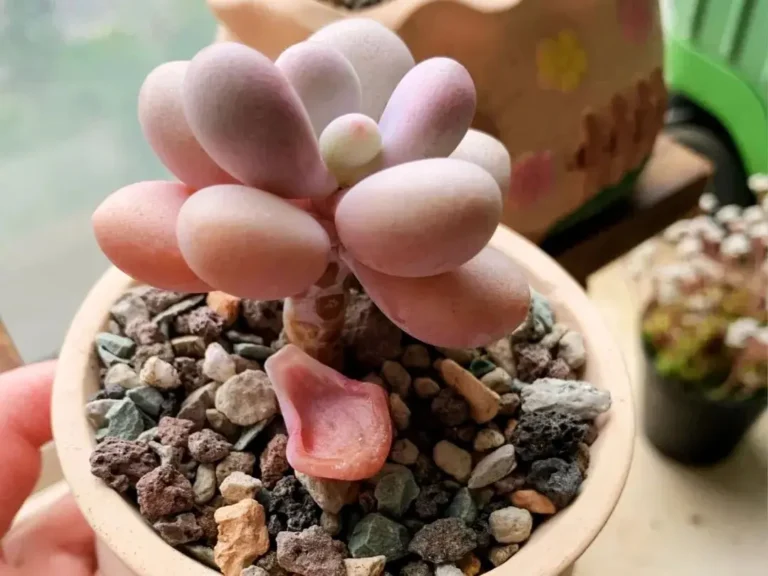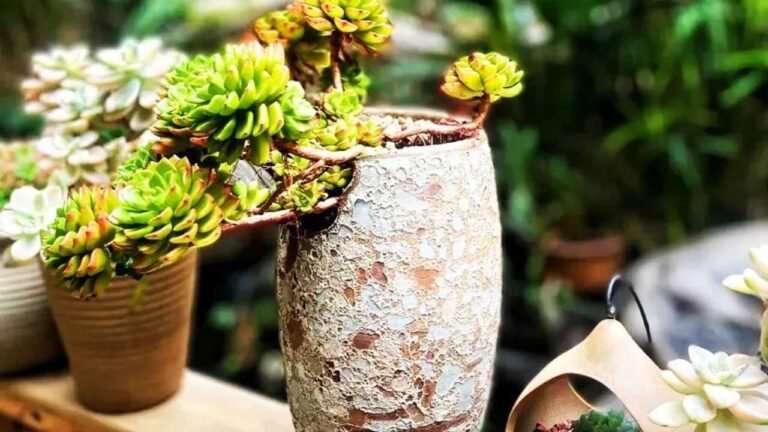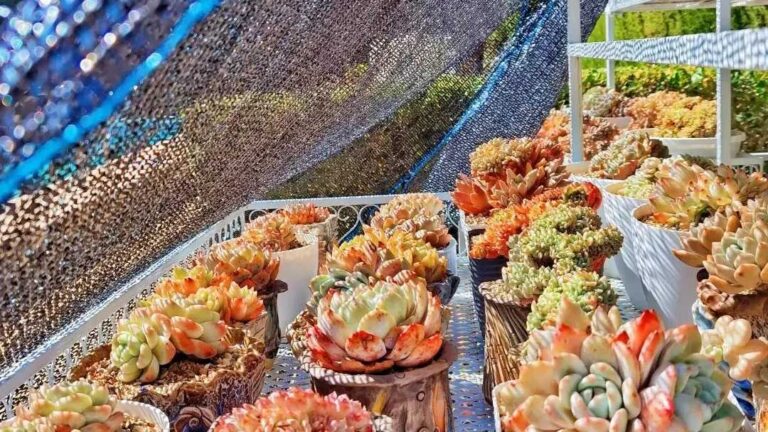Scientific Analysis: Four Driving Factors of variegated succulents
- Natural Genetic Mutation: The Mysterious Strike of the Chloroplasts
The essence of succulent brocade is a random mutation of the chloroplast DNA Mutation, which leads to the blockage of chlorophyll synthesis in some areas of the leaf blade. This phenomenon is similar to albinism in the animal kingdom, but is known as a “living jewel” due to its rarity (natural incidence <0.01%).
Key triggering conditions:
✅ Changes in UV intensity (e.g. summer midday light vs. winter diffused light)
✅ Dramatic fluctuations in temperature between day and night (ideal temperature difference of 10-15℃)
✅ Sudden changes in humidity (e.g. rainy season with high humidity followed by sudden drying)
- Genetic inheritance: Mutagenesis of the mother plant
Some varieties (e.g. Neon Yulu, White brocade Kamehameha Dragon) can be stabilized by asexual propagation to inherit brocade traits:
Leaf insertion success rate: ~30-50% (common succulents >80%) (common succulent >80%)
Splitting stability: only 5-10% of the offspring retain the brocade spots if the mother plant is a “chimeric brocade” (Chimera)
- Artificial intervention: the game of temperature manipulation
Mimic the natural mutation conditions by environmental stress:
Classical operation:
① Darkness treatment for 7 days → inhibit chlorophyll synthesis
② Suddenly exposed to strong light (≥20,000 Lux) → trigger the cellular stress response
Success rate: Success rate: about 3-5%, and easy to lead to plant weakness
- Drug counterfeiting: dangerous “chemical brocade”
⚠️ The so-called “brocade potion” is actually a diluted solution of herbicides (such as glyphosate), by destroying the chloroplasts to create false brocade
Mortality rate: >90% within 3 months after treatment
- Market identification:
✅ True brocade: natural gradient of spots, new and old leaves are consistent
❌ Drug brocade: abrupt color, leaf center concentrated fading
Variegated Succulents: the existential crisis behind the beauty
- Negative effects:
Decrease in photosynthetic efficiency: 60-70% decrease in chlorophyll in white brocade area, need to supplement light to maintain (cost $200+/year)
Weakening of resistance to disease: incidence rate of black rot is 3 times higher, with mortality rate up to 25%
Reproductive ability plummets: success rate of leaf insertion is less than 10%, and seed genetics rate is less than 1%
- Positive value:
Collector’s premium: annual appreciation for rare brocade varieties is 20-50%. Space 20-50%
Scientific research significance: as a model of plant gene mutation, to promote the study of resistance
Practical advice for international variegated succulents players
- Purchase to avoid pitfalls:
Ask the seller to provide a video of the growth record of the mother of the 3 generations
Detecting the UV fluorescence reaction: real brocade shows a natural texture under the UV rays of 365 nm
- Maintenance of the just-needed configuration:
Light source: full-spectrum LED plant light (≥15,000 Lux) )
Media: 70% granular soil + 30% coir Medium: 70% granular soil + 30% coco coir (to prevent root rot)
Temperature Control: Intelligent thermostat to maintain 10-25℃ (investment about $300)
Conclusion: variegated succulent is a miracle of intertwining nature and technology. Real players not only chase the spots, but also reverence the random beauty of the evolution of life.





